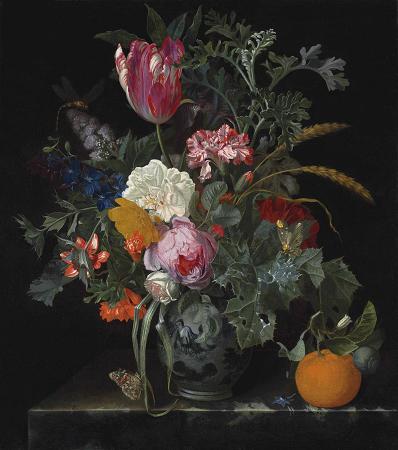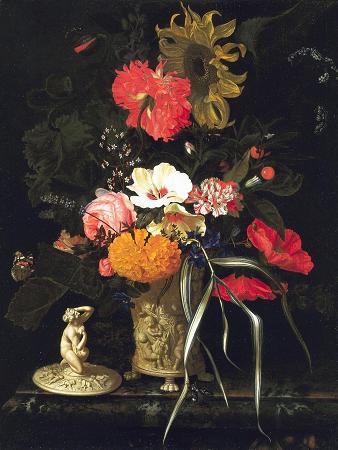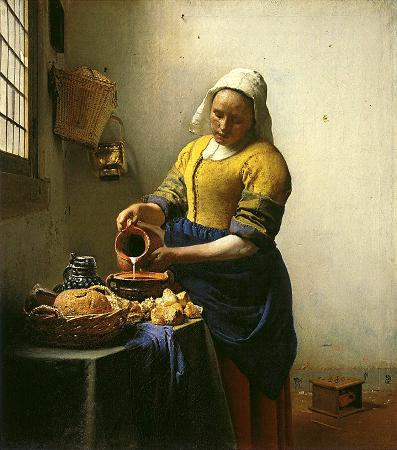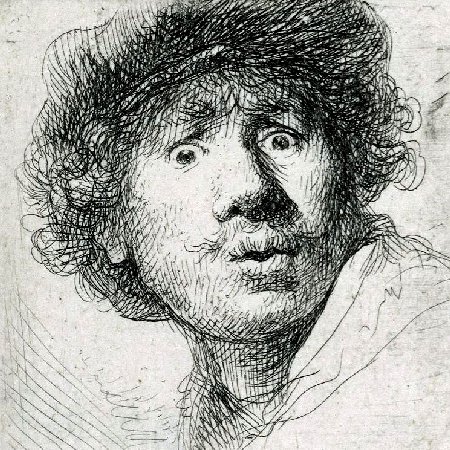Maria van Oosterwijck (c1630 - c1693). Maria van Oosterwijck, also spelled Oosterwyck, was a Dutch Golden Age painter, specializing in richly detailed flower paintings and other still lifes. Maria van Oosterwijck was born in 1630 in Nootdorp, a town located near Delft in South Holland, the Netherlands. Her date of birth is generally listed as 20 August, but some sources state that it was 27 August. Her father was a Dutch Reformed Church minister, as was her grandfather. Her father took her, when she was quite young, to masterful still life painter Jan Davidsz. de Heem's studio. With de Heem's influence, van Oosterwijck developed her interest in floral painting. She became his student, and she showed herself to have a talent for vividly painting realistic creations. Van Oosterwijck initially worked in Delft and later moved to Utrecht. She worked with de Heem, and years later she produced her first professional piece which had been created independently. When de Heem moved to Antwerp, van Oosterwijck had ample opportunity for independent painting. Sometime in the early-to mid-1670s, she moved to Amsterdam, where her studio was opposite the workshop of fellow flower painter Willem van Aelst. Van Aelst courted her, but she refused his hand, and he reportedly stopped pursuing her because her devotion to painting was more important to her. Van Oosterwijck remained single throughout her life, but she raised her nephew, who had been orphaned. In addition to being a talented painter, she was also a savvy businesswoman; she obtained the services of an agent in Amsterdam to market her pieces to Germans. Among her patrons were Louis XIV of France, the Holy Roman Emperor Leopold I, Augustus II the Strong, and William III of England; she sold three pieces to the King of Poland. Despite the fact that her skillfully executed paintings of flowers were sought out by Dutch and other collectors, she was denied membership in the painters' guild, because women were not allowed to join. Very few women were professional artists during the 1600s. In a 2004 book on Dutch Golden Age paintings by art historian Christopher Lloyd, van Oosterwijck was the only woman whose work was included. Early writers tended to depict female artists by correlating virtues which were traditionally held by women with similar values gleaned from interpretation of their paintings. Van Oosterwijck, who devoted her life to her painting rather than being a wife and mother, proved a challenging subject for these writers, and their accounts may not portray her as a fully formed personality. The more personal aspects of her paintings were also largely unexplored. This is in contrast to Rachel Ruysch, who was married and had ten children, and was written about in very personable and glowing terms. As an homage to van Oosterwijck's skill as a floral painter-considered an acceptable vocation for a woman of the time-Wallerant Vaillant painted a portrait of her holding a palette. This 1671 portrait, in Amsterdam's Rijksmuseum, shows her holding a Bible in her other hand. Another portrait of her, attributed to Gerard de Lairesse, features her posing with poet Dirk Schelte. In 1673, Schelte had written a poem in tribute to the beauty of van Oosterwijck's paintings, as well as that of her character. The portrait appears to reference the poem, picturing van Oosterwijck, with palette and brushes, as a painter-muse, serving as an inspiration to Schelte the poet. She taught her servant Geertgen Wyntges, also known as Geertje Pieters, to mix her paints, and trained her as a painter too. After van Oosterwijck died, Wyntges lived independently, supporting herself as a painter. In 1689, van Oosterwijck created her last known painting, a still life which is in the Collection of Her Majesty the Queen at London's Kensington Palace. This painting, Still Life with Flowers, Insects and a Shell, was acquired by the Royal Collection during Queen Anne's reign, as was another van Oosterwijck work. She died at her home in Uitdam, North Holland, about 12 kilometres northeast of Amsterdam, in 1693. The date of her death is often reported as 12 November, but some sources claim it was in December. Arnold Houbraken, biographer of Dutch Golden Age artists, eulogized van Oosterwijck, but did not consider her to be a professional artist, despite the very large sums paid for her paintings by such high-profile collectors as various members of European royalty. Van Oosterwijck created floral paintings and still lifes with allegorical themes during a period in which such works were much sought after in Central Europe. She and Ruysch were judged to be the most eminent still life painters of the Low Countries. Van Oosterwijck's work, using luminous colors, is very richly detailed, sometimes demonstrating chiaroscuro techniques in her use of light and shadow.
more...













